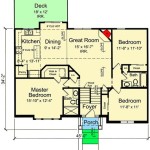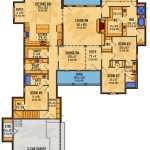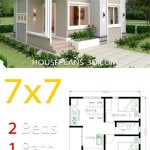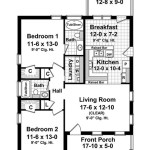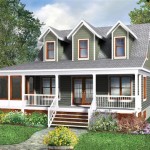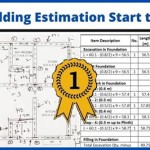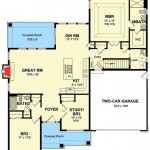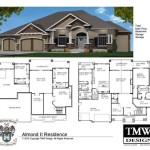Tiny House With Loft Floor Plans: Maximizing Space and Style
The allure of tiny houses continues to captivate homeowners seeking simplified living and financial freedom. One of the most effective ways to maximize space within a tiny home is by incorporating a loft floor plan. This architectural element allows for multi-level living, creating separate areas for sleeping, working, or entertaining. The design possibilities are endless, offering homeowners flexibility to tailor the space to their unique needs and preferences.
Designing a loft floor plan for a tiny house requires careful consideration of various factors, including the overall size of the house, the desired function of the loft, and the layout of the remaining living space. A well-thought-out plan ensures a balanced and functional home while maximizing the potential of every square inch.
Understanding the Benefits of Loft Floor Plans
Tiny house loft floor plans offer several distinct advantages that contribute to a more efficient and enjoyable living experience:
1. Vertical Space Utilization:
The most significant benefit of a loft is its ability to utilize vertical space. By creating an upper floor, you gain valuable floor space on the lower level, allowing you to create distinct living areas without sacrificing square footage. This is particularly advantageous in smaller tiny houses, where every inch counts.
2. Versatility in Functionality:
Loft floor plans provide versatility in functionality. Depending on your needs, the loft can be transformed into a cozy bedroom, a home office, a playroom for children, or even a guest space. The ability to adapt the loft to various purposes enhances its overall value and practicality.
3. Enhanced Aesthetics:
Loft floor plans can add a unique visual appeal to tiny house designs. The open staircase leading to the loft creates a sense of grandeur and height, while the loft itself provides a natural separation between living spaces, creating a more defined and inviting atmosphere.
Essential Considerations for Tiny House Loft Floor Plans
Before diving into the design process, it's crucial to consider several factors that will influence the success of your tiny house loft floor plan:
1. Headroom and Staircase Design:
Adequate headroom is essential for loft spaces to avoid claustrophobia and ensure comfortable movement. The height of the loft should allow for standing comfortably, ideally around 7 feet or more. The staircase leading to the loft must be carefully designed to ensure safe and convenient access. This includes factors like the width of the steps, the angle of the staircase, and the overall stability of the structure.
2. Structural Support:
The loft needs to be properly supported to ensure its stability and safety. Consult with a qualified architect or structural engineer to determine the necessary support beams and reinforcements based on the weight of the loft and its contents.
3. Lighting and Ventilation:
Loft spaces can sometimes suffer from poor lighting and ventilation. Ensure adequate natural light with strategically placed windows or skylights. Consider installing an exhaust fan to improve airflow and prevent humidity buildup, particularly if the loft is used as a bedroom.
4. Safety Measures:
Safety is paramount in tiny houses with lofts. Install handrails along the staircase and consider adding extra safety features such as a gate at the top of the stairs to prevent falls, especially if children are present. Ensure proper fire safety measures, including smoke detectors and fire extinguishers, both on the lower level and within the loft space.
Popular Tiny House Loft Floor Plan Ideas
Here are some popular and versatile tiny house loft floor plan ideas to spark your creativity:
1. Open Loft with Sleeping Area:
This classic design features a spacious open loft area typically used for sleeping. The loft can be accessed by a simple staircase or a ladder, depending on the available space. This plan maximizes floor space on the lower level, ideal for creating a living room, kitchen, or dining area.
2. Loft with Encased Bedroom:
For added privacy, the loft area can be enclosed with railing or walls to create a separate bedroom. This design allows for more personal space within the loft and provides a more traditional bedroom feel. By strategically placing windows in the loft, you can ensure sufficient natural light even within the enclosed space.
3. Loft with Built-in Office Space:
Maximize the loft for productivity by turning it into a dedicated home office. This can include a desk, shelving, and storage space all within the loft area. The loft's elevated position can provide a quiet and inspiring workspace separate from the hustle and bustle of the lower level.
4. Loft with Combined Sleeping and Office Space:
For a more flexible approach, combine sleeping and office space in the loft. This can be achieved by using a murphy bed or a similar space-saving solution that converts from a bed to a desk during the day. This design offers a dual-purpose space for both work and relaxation within the loft.

Tiny House Floor Plan With Loft

The Mcg Loft A Tiny House With Staircase Humble Homes

10 Unique Plans Of Tiny Homes And Cabins With Loft Craft Mart

Loft Cabin Tiny House Floor Plans Design Small

Tiny House Design Floor Plans

16 Smart Tiny House Loft Ideas

Tiny House Floor Plans 32 Home On Wheels Design

Modern Tiny House Plans

Loft Floor Plans Singapore

Tiny House Floor Plans Design Your

